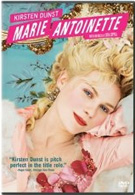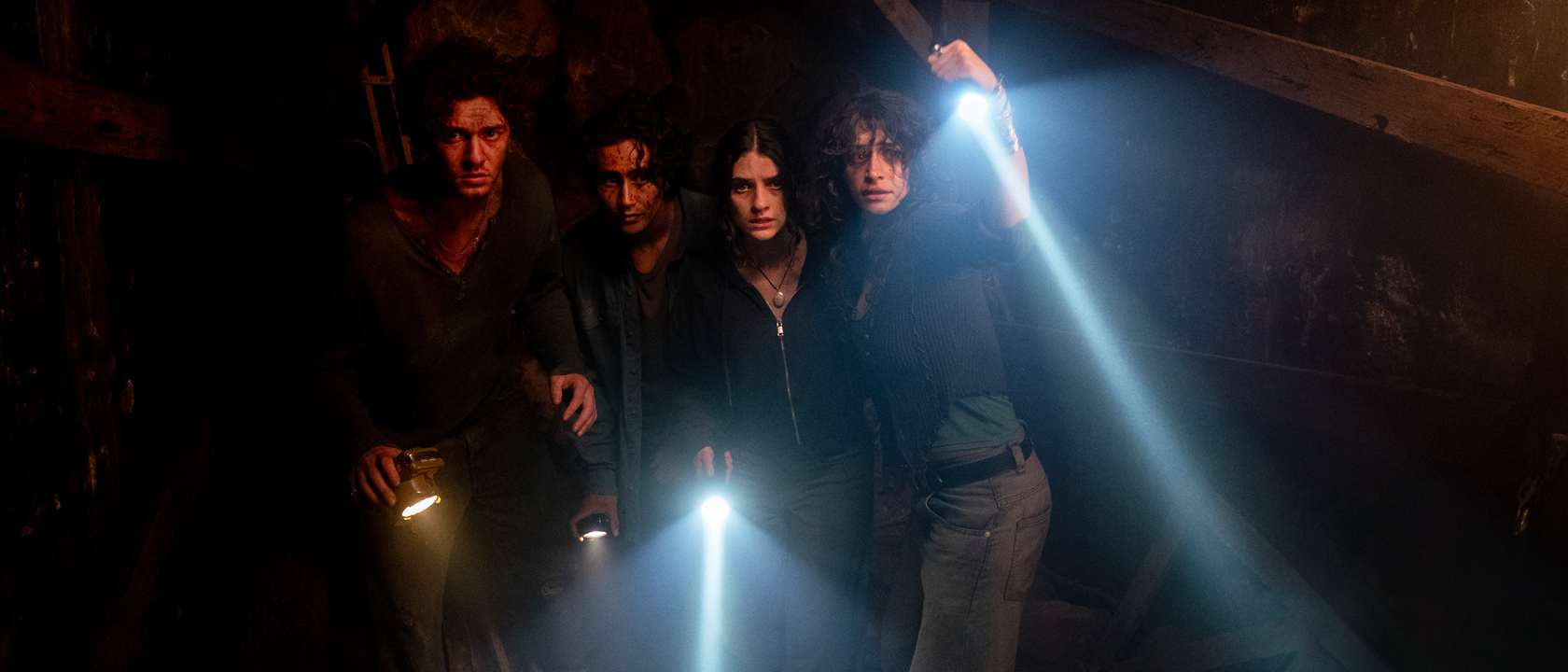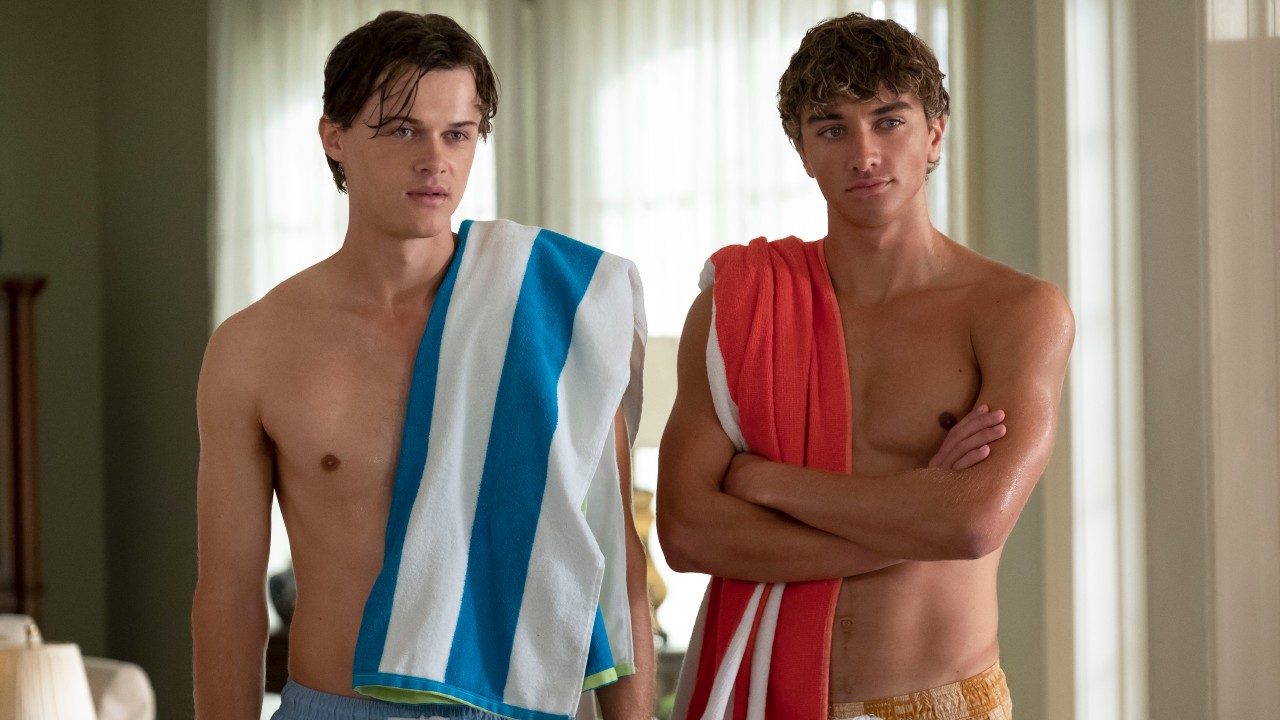Throughout this very long and tiring film, I kept asking myself why I should care about THIS Marie Antoinette. What makes her so special or particularly human to be remembered to this day and to have an entire book and movie made about her life. She did not invent anything notable, did not devote her life to any worthwhile pursuits, and did not die so others could live. She merely ate lots of food, bought thousands of shoes and dresses and hung out at parties and gambling halls. I kept thinking that this could be the story of Paris Hilton if she were to be married off to an impotent French Prince instead of dating meatheads armed with camcorders. As the movie displayed yet another orgy of eating, I also kept thinking how thin everyone appeared to be even though they seemed to eat all the time. Surely these folks must’ve been busting out of their corsets. But mostly there was the one central question: Why did Sofia Coppola want to make this movie? I really don’t think she knows the answer. Losing her head to the guillotine is what defined the historical figure of Marie Antoinette. The fact that Sofia Coppola skips the whole beheading and the drama that leads up to it is one of many mistakes made in the production of this film. The idea to keep the language contemporary and to use ‘80s pop songs to put today’s audience into Marie’s subjective experience is not uninspired, no matter how many of Baz Luhrmann’s toes got stepped on in the process. Coppola is onto something almost sublime with this conception since the retro-romantic bands of the early ‘80s “new wave” did often dress up in puffy shirts and coattails to capture the spirit the times.
But Sofia Coppola approaches the subject with both reverence and stylistic reticence and the results are too much and too little. She seems sheepish about expressing the idea fully and allowing the movie to exude the energy and freedoms that such an approach should allow. As it is, despite anachronisms like the music and the general weirdness of Rip Torn as a Texan King in the French Court, the film is not a whole lot different from a more standard issue stiff “Masterpiece Theater” adaptation. This film is really a special kind of disappointment, one so close to being great that it’s failure to do so inspires intense outrage.
Based on the book,Marie Antoinette: The Journey by Lady Antonia Fraser, Antoinette tells the story of the famous Queen from the time of her arrival at the court of King Louis to just before her fateful appointment on the chopping block. In between, she has random adventures in attempts to secure her Royal position by producing a male heir to the throne. In this goal, her main obstacle is the pre-Viagra bedroom farce played out by Louis XVI (Jason Scwarztmann, trying desperately to underplay), who seems much too timid to raise the drawbridge. Besides the random scenes of eating, dressing up, bathing, and hair styling, this is basically all there is in the way of dramatic conflict.
The first hour of the film is the best, with a 14 year old Marie facing the uncertainties of her future in an arranged marriage, leaving her comfortable home and being stripped of everything that represents Austria for all that will mean France. This includes her beloved dog. But that’s all right, she is told she can have as many French dogs as she likes.
Kirsten Dunst is excellent in the title role. She has the right look and poise as Marie, a fine grace in her walk without losing that girlish twinkle in her eye. This would be a difficult role for any actress. The role demands a certain naiveté but also the great courage to meet the challenges and responsibilities foisted upon Marie at so young an age. Dunst lets us feel intimate with the nervous young girl and later, the bold young woman. Marie Antoinette was clearly a victim of the revolutionary’s “tabloid” press which made her into a concrete villain for their cause. She, of course, did nothing to reverse the bad PR, but both Fraser’s book and Coppola’s adaptation want to present her in a more rounded light.
But this is where the trouble begins. Coppola makes some strong decisions in her adaptation. First, the entire story is experienced from Marie’s point of view, so that we see nothing of the outside world and live only in the fantasyland of Versailles. Secondly, the style of the film is observational; the camera and microphone peeking and listening like the surveillance man Harry Caul from her father’s classic The Conversation. We overhear many conversations, all spreading gossip about Marie who seems on the edge of hearing them bitch about her. The sound mix is Altman-lite, with various tracks competing against each other for domination. The weakness of this approach here is that, unlike Altman, who uses very clear characterized vignettes, Coppola allows the chatter to be characterless, and more like a random sampling of sound from the set. Very little is gained from the effect.
Narratively, the film begins very strong and sweeps us up into its world only to leave us there stranded with no character or drama to cling to. Then, in the film’s climactic moments, we find ourselves gripped again by the tension of the revolution coming to Versailles, to their very front door. It’s here that Marie finds the inner strength to carry out the role of Queen that she was hired to play. If only Sofia Coppola could’ve cut a few scenes of gambling,eating or dressing to expand upon these defining moments of her life, the last days before her death, we could’ve had a movie that captured the full breadth of the tragedy. Perhaps demonstrating what is was about this woman that inspires telling her story.
Characters move in and out of the film without regard. It seems for a while that the King’s hated mistress Madame DuBarry (Asia Argento) is going to be a foil for Marie. But she’s just sent away when the King dies. Rose Byrne appears as a playful and very carnal friend to Marie, but they have no real scenes together and we are meant to take their friendship at face value. Opportunities to give Steve Coogan more to do than to provide exposition are squandered and this is a shame since he is very charismatic in the role of her only Austrian aid, Ambassador Mercy. Both Danny Huston as Marie’s older brother Joseph of Austria and Judy Davis as the Countess de Noailles easily steal their respective scenes. They are excellent and seem to be very aware of the sly stylization required to convey the sense of period as well as the film’s glossy surface. They are also just tossed in among the scenery. You could add Marianne Faithfull and Aurore Clement to this list as well since their characters are just empty shadows.
Technically, the film is flawless. Much of the film is shot on location in Versailles and the pastel world that is created onscreen is a marvel of costume and set design. Coppola, along with cinematographer Lance Accord, does a marvelous job capturing the visual world. She seems to be particularly fascinated by the effect of sunlight at different times of day which give many scenes in Antoinette a real poetic atmosphere. The warm orange rays cutting through the skeletal trees low on the horizon during the last scene in the carriage create a mood of resignation and death. A cold sense of calm.
It’s clear that Coppola wanted to focus on the smaller, more personal story of Marie’s life in a gilded cage. That being so, the film should’ve focused even more tightly on a shorter span of time to allow that idea the room it needs. As it is, we get some nice clothes, beautiful images and charming performances. All hanging on for dear life in a movie with no story. Marie Antoinette is presented on DVD in Widescreen Anamorphic 1.85:1. The transfer is beautiful complementing the fine work by Milena Canonero designing the pastel costumes and the fragile light captured by cinematographer Lance Accord. Fittingly there are two sets of audio tracks and subtitles, one in English, the other French.
The primary supplement is the brief behind the scenes documentary, The Making of Marie Antoinette. This is a very standard EPK feature presenting the usual self congratulatory interviews with the cast and crew. Nothing special at all except for the very unique black outfit worn by Sofia Coppola which resembles the halloween skeleton costumes in The Karate Kid. She’s known for designing her own clothes and accessories so if this was one of them, hats off to her.
Besides the theatrical and teaser trailer, there are trailers for several other Sony Pictures, the most notable being Spider-Man 3. The final supplement is a momentarily amusing parody of the MTV show Cribs featuring Jason Schwartzman in his more familiar sly persona calling himself “Louis XVersusI” and showing us around his swanky Royal pad. This extra is really just a fun way to show us around the museum that Versailles is today. If you want to waste a few minutes, here is your chance.
All in all, the DVD release is about as thin as the movie itself. Sofia Coppola has so many elements that are interesting; it’s unfortunate that the movie does not exploit them to the fullest. In the end we get a handful of moments, some nice performances, and great visuals. If only the movie could’ve shown us what was under that pastel surface.
NCIS: Origins' Showrunner Revealed 'The Real Highlight' Of Learning Season 2 Was Happening, And I Discovered They Pulled Off An Amazing Achievement In The Process
Why One The Summer I Turned Pretty Fan Thinks A Parallel Between The Latest Poster And An Audrey Hepburn Movie Spoils The End
I Talked To The Wedding Banquet Director About My Favorite Scene, And Turns Out Youn Yuh-Jung Actually Had A Key Note That Made It Better











